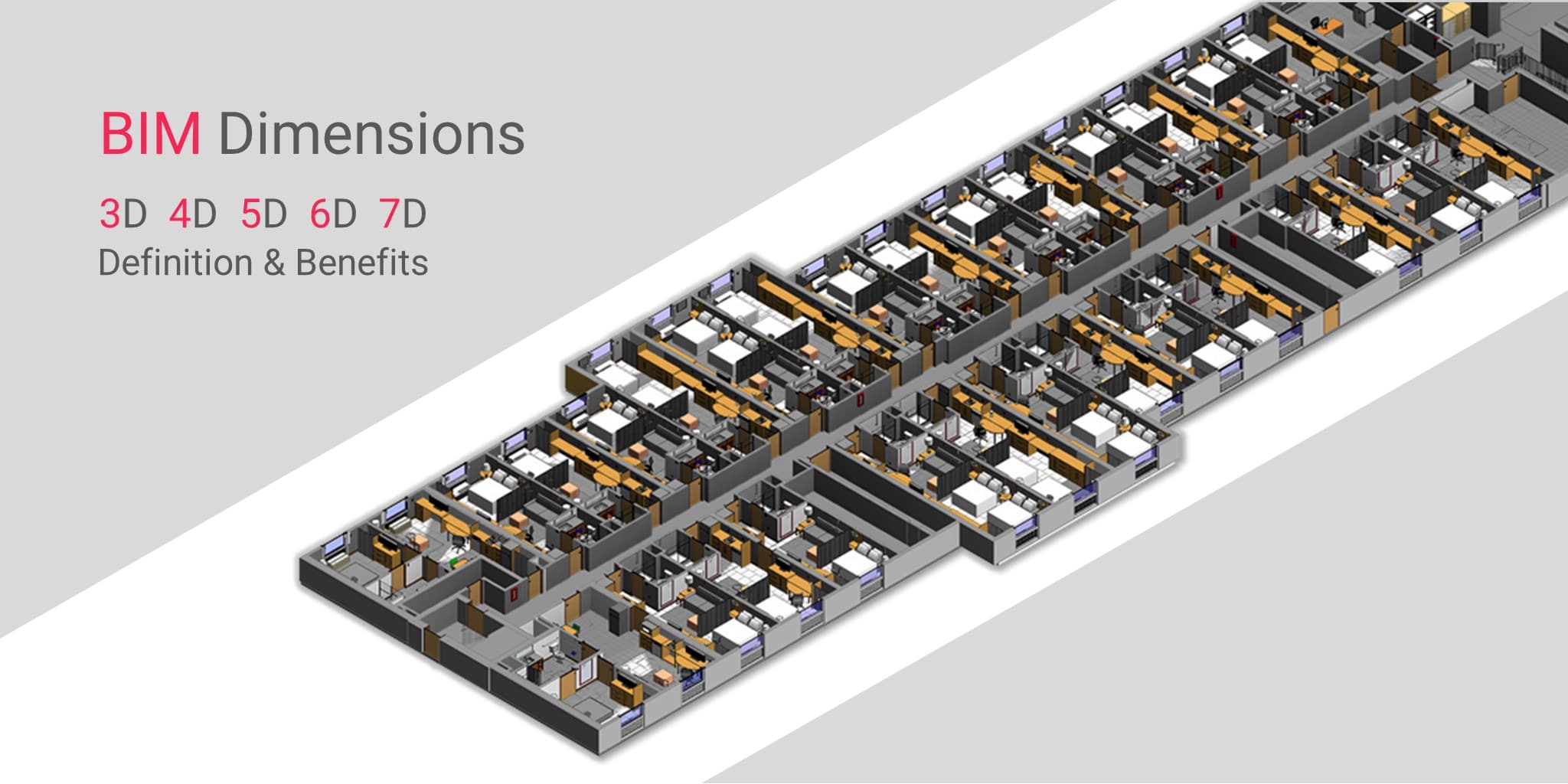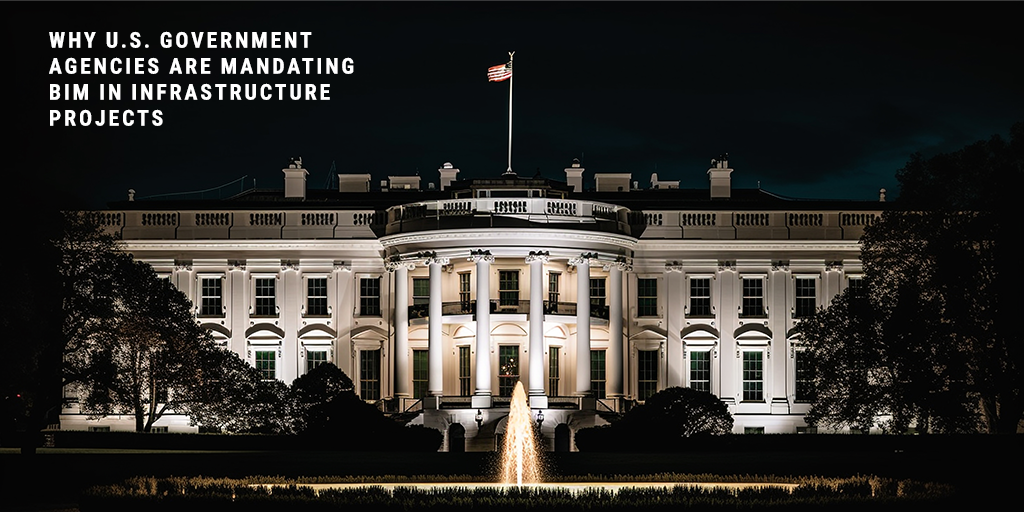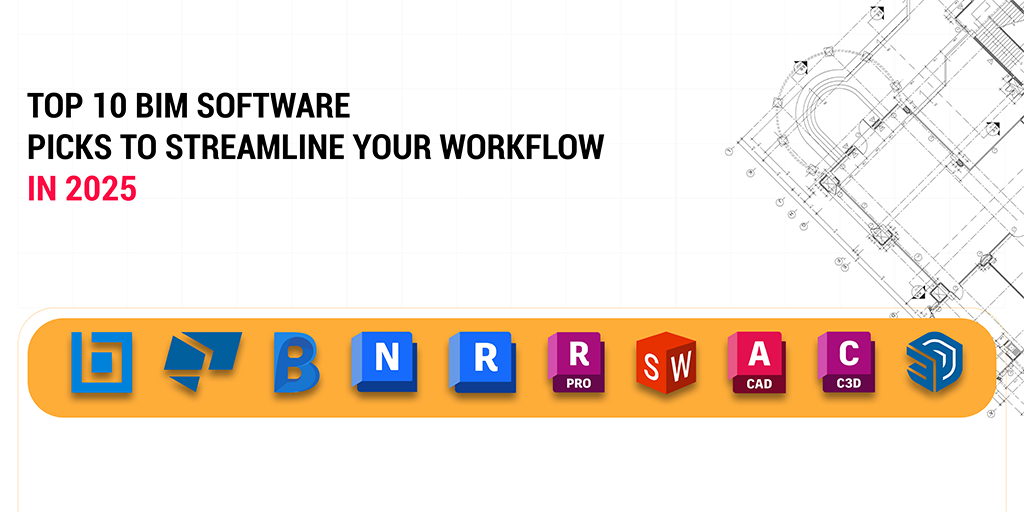Last updated on: January 7, 2025
Table of Contents
- What is 3D BIM? – BIM 3rd Dimension: All About Geometry
- Explore the Power of 3D BIM
- What is 4D BIM? – BIM 4th Dimensions: Duration, Timeline & Scheduling
- Experience the Benefits of 4D BIM
- What is 5D BIM? – BIM 5th Dimension: Cost Estimation, Analysis, and Budgetary Tracking
- What is 6D BIM? – BIM 6th Dimension: Making a Structure Self-Sustainable & Energy Efficient
- Understanding 6D BIM and Its Benefits
- What is 7D BIM? – BIM 7th Dimension: Holistic Facility Management Information for Entire Lifecycle
- Optimize Your Building Operations with 7D BIM
Building Information Modeling (BIM) is a dynamic process of creating information-rich models for the entire lifecycle of a construction project.
As a project progresses through different stages, the Level of Development (LOD) in a BIM model evolves, increasing in detail from LOD 100, 200, 300, and beyond. This gradual evolution enables the model to meet project-specific needs with precision.
A BIM model can address pre-defined use cases, often referred to as BIM dimensions. These dimensions, ranging from 3D to 7D, enhance the data associated with the model, improving project understanding and outcomes. With advancements in technology, BIM has expanded its scope from basic 3D and 4D modeling to more sophisticated 5D, 6D, and 7D capabilities, revolutionizing the Architecture, Engineering, and Construction (AEC) industry.
These dimensions enhance the data associated with a model to share a greater level of understanding of a construction project.
In the modern era, BIM technology has evolved from basic 3D & 4D dimensions to more sophisticated 5D, 6D & 7D dimensions that are poised to change the future of the AEC industry.
BIM dimensions – 3D, 4D, 5D, 6D & 7D, each have its own purpose and are useful in finding out how much a project would cost, its timeline when it would be completed, and how sustainable it would be in the future.
3D
Geometry
3-dimensional (x, y, z) geographical structure.
4D
Time
Timeline, scheduling, and duration
5D
Money
Cost estimation, budget analysis
6D
Sustainability
Self-Sustainable & Energy Efficient
7D
Facility Management
Facility Management Information

No worries. Let us send you a copy so you can read it when it’s convenient for you. Just let us know where to send it.
What is 3D BIM? – BIM 3rd Dimension: All About Geometry
3D, as we are all commonly aware, represents the three geographical dimensions (x, y, z) of a building structure. The geographical capabilities help stakeholders to visualize a building’s structure in 3 dimensions even before the project is started.
3D BIM enables all the stakeholders to collaborate effectively for modeling and solving typical structural problems. Also, as everything is stored at a central location i.e. the BIM model, it becomes easier to resolve issues at a future stage.
The 3D BIM model acts as a centralized repository of design data, accessible via a Common Data Environment (CDE) for effective collaboration.
Benefits of 3D BIM
- Enhanced 3D visualization of the entire project
- Streamlined communication and sharing of design expectations
- Easy collaboration between multiple teams irrespective of their area of expertise
- Reduced instances of rework and revisions due to complete transparency from the beginning
What is 4D BIM? – BIM 4th Dimensions: Duration, Timeline & Scheduling
4D is related to planning the construction site by adding a new element i.e. time. Scheduling data helps in outlining how much time will be involved in the completion of the project and how will the project evolve over time.
The information can provide elaboration about the time taken for installation or construction, the time needed to make the project operational, the sequence of installation of various components, along with other scheduling information.
It can help in early conflict detection by seamlessly managing information related to site status and visualizing the impact of changes undertaken during the entire life-cycle.
Related article: “4D BIM” – Collaboration of Schedule with 3D BIM Model
Benefits of 4D BIM
- Improved site planning and scheduling optimization
- Seamless coordination among architects, contractors, and on-site teams
- Better preparedness in terms of next steps during every construction stage
- Enhanced information sharing related to timeline expectations helping to avoid costly delays
- Enhanced safety and efficiency due to documentation of an entire plan with specific timelines
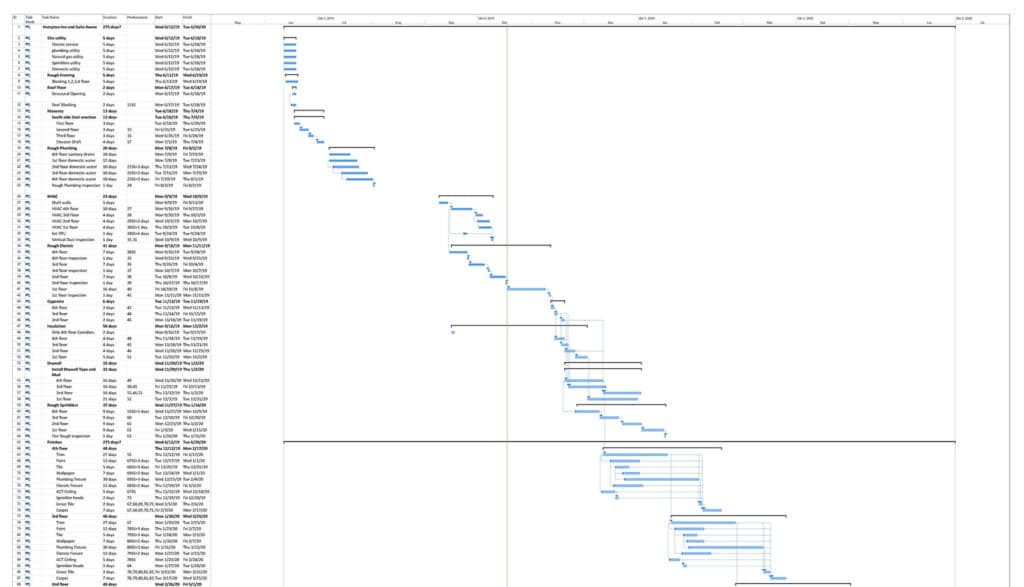
Related Article: “The 4D Way” – Collaboration of Schedule with 3D BIM Model
What is 5D BIM? – BIM 5th Dimension: Cost Estimation, Analysis, and Budgetary Tracking
5D BIM is useful in cases where budget analysis and cost estimation are required from the beginning of any project. It goes without saying that cost is one of the most important elements associated with a project. 5D BIM enables project promoters and owners to analyze the costs that will be incurred over time in the project activities.
5D BIM Services can help in accurately predicting the budgetary requirements along with the changes in scope, material, manpower or equipment requirements. Get Cost-estimation for your project today.
With 5D BIM, one can easily extract the costs associated with a scenario and can also factor in changes along the way.

Benefits of 5D BIM
- Real-time cost visualization with notification on changes in costs
- Automatic count for components/system/equipment associated with a project
- Simplified cost analysis and budgetary analysis with predicted and actual spends over time
- Minimization of budgetary offshoot due to regular cost reporting and budgeting
What is 6D BIM? – BIM 6th Dimension: Making a Structure Self-Sustainable & Energy Efficient
6D building information modeling helps to analyze the energy consumption of a building and come out with energy estimates at the initial design stages.
Accounting for various life stages of a structure, 6D BIM ensures accurate prediction of energy consumption requirements.
6D BIM technology takes the industry a step beyond the conventional approach that just focuses on the upfront costs associated with a project.
This approach helps in getting an idea of the entire cost of an asset and how the money should be spent on achieving sustainability and cost-efficiency.
6D BIM is also known as integrated BIM as it involves detailed information that can help in supporting facility management and operations at a future date.
This essentially involves information about a component’s manufacturer, installation date, maintenance schedule, configuration details for best performance, energy requirement, and decommissioning information.

Benefits of 6D BIM
- Reduced energy consumption in the long run
- Faster and more accurate decision making related to component installation during the design process
- Detailed analysis and impact of a decision on economic and operational aspects over the entire lifecycle
- Better operational management of the building or structure after handover
What is 7D BIM? – BIM 7th Dimension: Holistic Facility Management Information for Entire Lifecycle
7D BIM is all about operations and facility management by building managers and owners. The dimension is used to track important asset data such as its status, maintenance/operation manuals, warranty information, technical specifications, etc. to be used at a future stage.
7D BIM is a unique approach where everything related to the facility management process is collated in a single place within the building information model.
Such a tactic helps in improving the quality of service delivery during the entire lifecycle of a project. Using BIM for facility management ensures that everything in a project stays in its best shape from day 1 to the day of demolition of a structure. At United-BIM Inc., we aim to deliver peace of mind and value BIM Modeling Services through quality, speed, and a consultative approach.
7D BIM is a unique approach where everything related to facility management process is collated at a single place within the building information model.
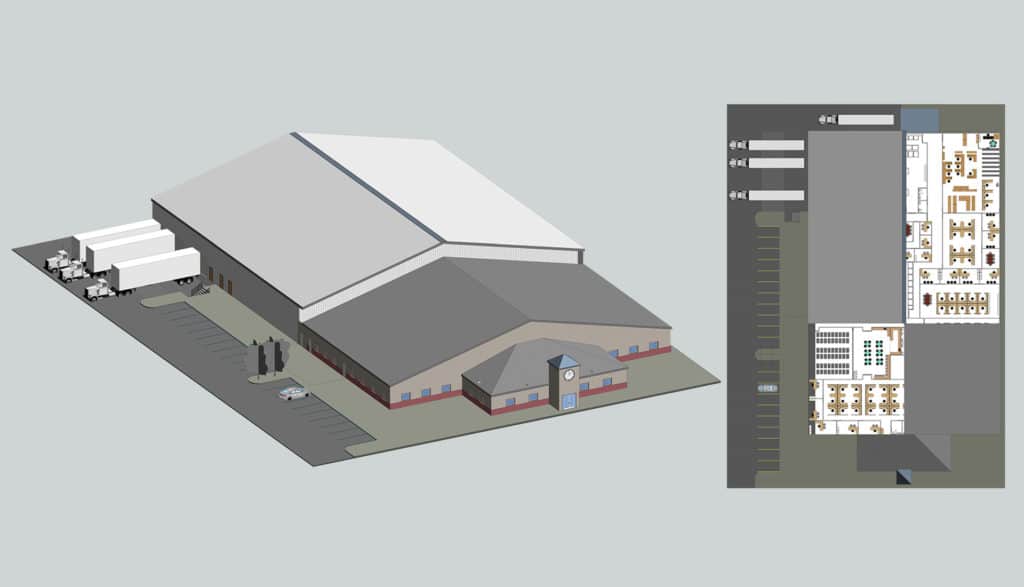
Related blog: How BIM is Facilitating Facility Management Process?
Benefits of 7D BIM
- Optimized asset and facility management from design stage to demolition
- Simplified and easy replacement of parts and repairs anytime during the entire life of a building
- Streamlined maintenance process for contractors and subcontractors
BIM dimensions are shaping the future of construction by delivering integrated solutions for visualization, scheduling, budgeting, sustainability, and facility management.
Don’t let your construction project fall behind in today’s fast-paced industry. Leveraging advanced BIM dimensions is no longer optional—it’s the key to staying ahead of the curve.
At United BIM, we bring clarity, efficiency, and innovation to every project. Let’s talk about how we can make your vision a reality—reach out today!
Each dimension in BIM (3D, 4D, 5D, 6D, and 7D) adds a specific layer of information to the model. 3D covers geometry (x, y, z coordinates), 4D incorporates time (scheduling), 5D adds cost (budgeting and cost estimation), 6D focuses on sustainability (energy efficiency and lifecycle performance), and 7D addresses facility management (asset and maintenance tracking throughout the lifecycle).
6D BIM focuses on sustainability and lifecycle performance, integrating energy efficiency and operational data into the building model. It helps ensure that buildings are not only energy-efficient but also sustainable throughout their entire lifespan.
• While 7D BIM is most valuable during facility management, it is integrated throughout the construction process. It ensures that key data related to assets and maintenance is included in the BIM model from the outset, which makes operations more efficient once the building is in use
Projects that require long-term energy management, operational efficiency, and comprehensive facility management, such as hospitals, large office complexes, educational institutions, and other commercial buildings, can greatly benefit from the integration of 6D and 7D BIM.
• BIM dimension services are versatile and can be applied to a wide range of projects, including commercial buildings, residential complexes, healthcare facilities, educational institutions, industrial plants, infrastructure developments, and government projects.
About the Author

Coordination Manager / VDC Manager at United BIM
With over 10 years of experience in the AEC industry, Akash Patel is a seasoned Coordination Manager and VDC Manager at United BIM. His expertise lies in managing complex MEP-FP coordination projects and leveraging cutting-edge BIM technology to ensure seamless collaboration and precision. Akash is dedicated to delivering high-quality, detailed models that meet the demands of modern construction. He is passionate about optimizing workflows and driving innovation within the BIM field.
